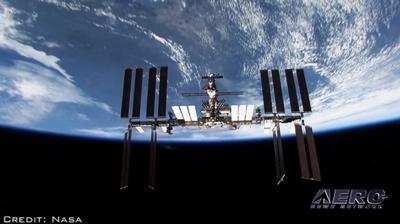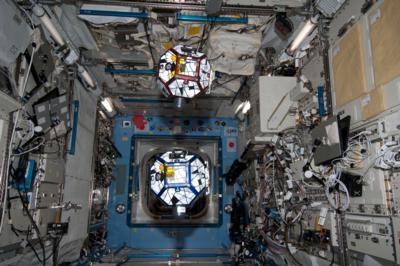Tue, Jan 15, 2019
Highlights Fiscal Year 2018 Successes And Achievements, Showcases Demand Acceleration And Impact
The International Space Station (ISS) U.S. National Laboratory has released its 2018 Annual Report. The report is intended to educate stakeholders and the general public on highlights and accomplishments from the 2018 fiscal year (October 1, 2017 through September 30, 2018). The report includes an updated look at the ISS National Lab research and development portfolio, in-orbit activities onboard the space station, new and enhanced partnerships, success stories, and expanding engagement and outreach.

Since NASA tasked the Center for the Advancement of Science in Space with management of the ISS National Lab in 2011, one of the organization's main goals has been to increase demand onboard the orbiting platform—through increased research projects, increased research investment, and the enabling of a more commercialized low Earth orbit economy.
Achievements highlighted in the 2018 Annual Report speak to the enhanced private-sector involvement onboard the ISS National Lab and the continued strides made during the 2018 fiscal year. The report also shows the continued evolution of commercial facilities on the space station, supported through the partnership between NASA and the ISS National Lab. Increased capabilities from the addition of new facilities available to ISS National Lab users further enables research and innovations that have the capacity to benefit life on Earth. From an investment standpoint, in fiscal year 2018 alone, more than $19 million in funding came from programs funded by third-party investors (both private companies and other government agencies), demonstrating the growing interest in microgravity research.
The 2018 Annual Report also highlights additional key accomplishments of the ISS National Lab, including the following:
- More than $150 million in external, non-NASA funds are now invested in ISS National Lab research—a 50% increase in fiscal year 2018.
- The ISS National Lab selected 50 new projects and programs in fiscal year 2018, the strongest year to date for portfolio growth.
- In fiscal year 2018, 74 payloads were delivered to the ISS National Lab, carrying multiple projects and investigations across a diverse subset of science disciplines.
- During the 2018 fiscal year, 17 new publications were released from ISS National Lab-sponsored investigators, along with three patents granted related to ISS National Lab research.

"The 2018 ISS National Lab Annual Report provides an overview of the continued progress of our only orbiting laboratory as a facility capable of fostering exciting research, unique partners, and enhanced growth potential," said Dr. Joseph Vockley, president and chief executive officer of the ISS National Lab. "The continued acceleration of science onboard the station and the diversification of partners demonstrates that the ISS National Lab is enabling significant benefits to life on Earth, and we look forward to continuing to grow this burgeoning space research community."
(Source: International Space Station (ISS) U.S. National Laboratory. Image from file)
More News
Aero Linx: Model Aeronautical Association of Australia MAAA clubs are about fun flying, camaraderie and community. For over 75 years, the MAAA has been Australia’s largest fl>[...]
Touchdown Zone Lighting Two rows of transverse light bars located symmetrically about the runway centerline normally at 100 foot intervals. The basic system extends 3,000 feet alon>[...]
“Discovery and innovation are central to our mission at Virgin Galactic. We’re excited to build on our successful record of facilitating scientific experiments in subor>[...]
How To Get A Story On Aero-TV News/Feature Programming How do I submit a story idea or lead to Aero-TV? If you would like to submit a story idea or lead, please contact Jim Campbel>[...]
Student Pilot Reported That During Rotation, “All Of A Sudden The Back Of The Plane Kicked To The Right..." Analysis: The student pilot reported that during rotation, “>[...]
 ANN's Daily Aero-Linx (05.02.24)
ANN's Daily Aero-Linx (05.02.24) ANN's Daily Aero-Term (05.02.24): Touchdown Zone Lighting
ANN's Daily Aero-Term (05.02.24): Touchdown Zone Lighting Aero-News: Quote of the Day (05.02.24)
Aero-News: Quote of the Day (05.02.24) ANN FAQ: Contributing To Aero-TV
ANN FAQ: Contributing To Aero-TV NTSB Final Report: Cirrus Design Corp SR20
NTSB Final Report: Cirrus Design Corp SR20




